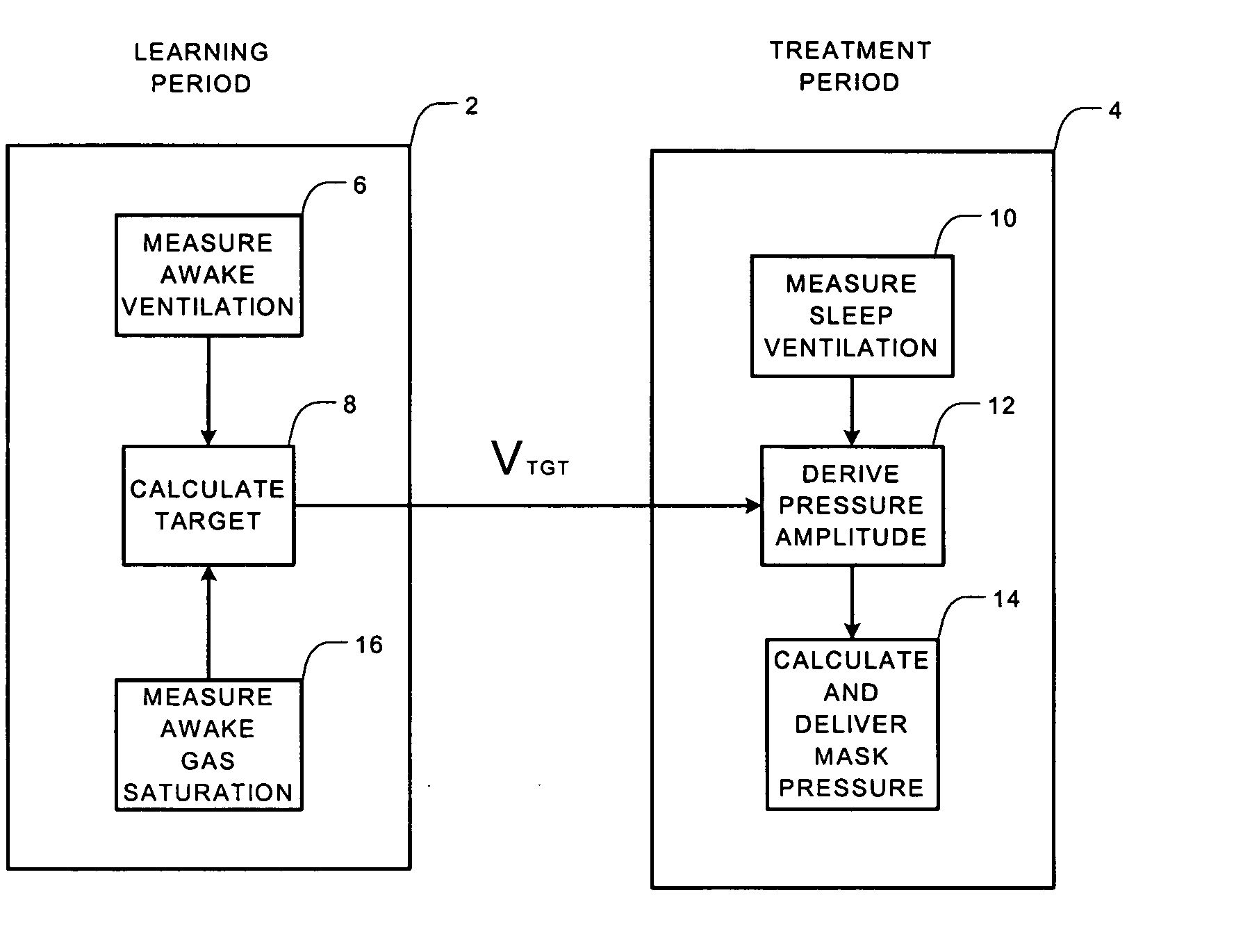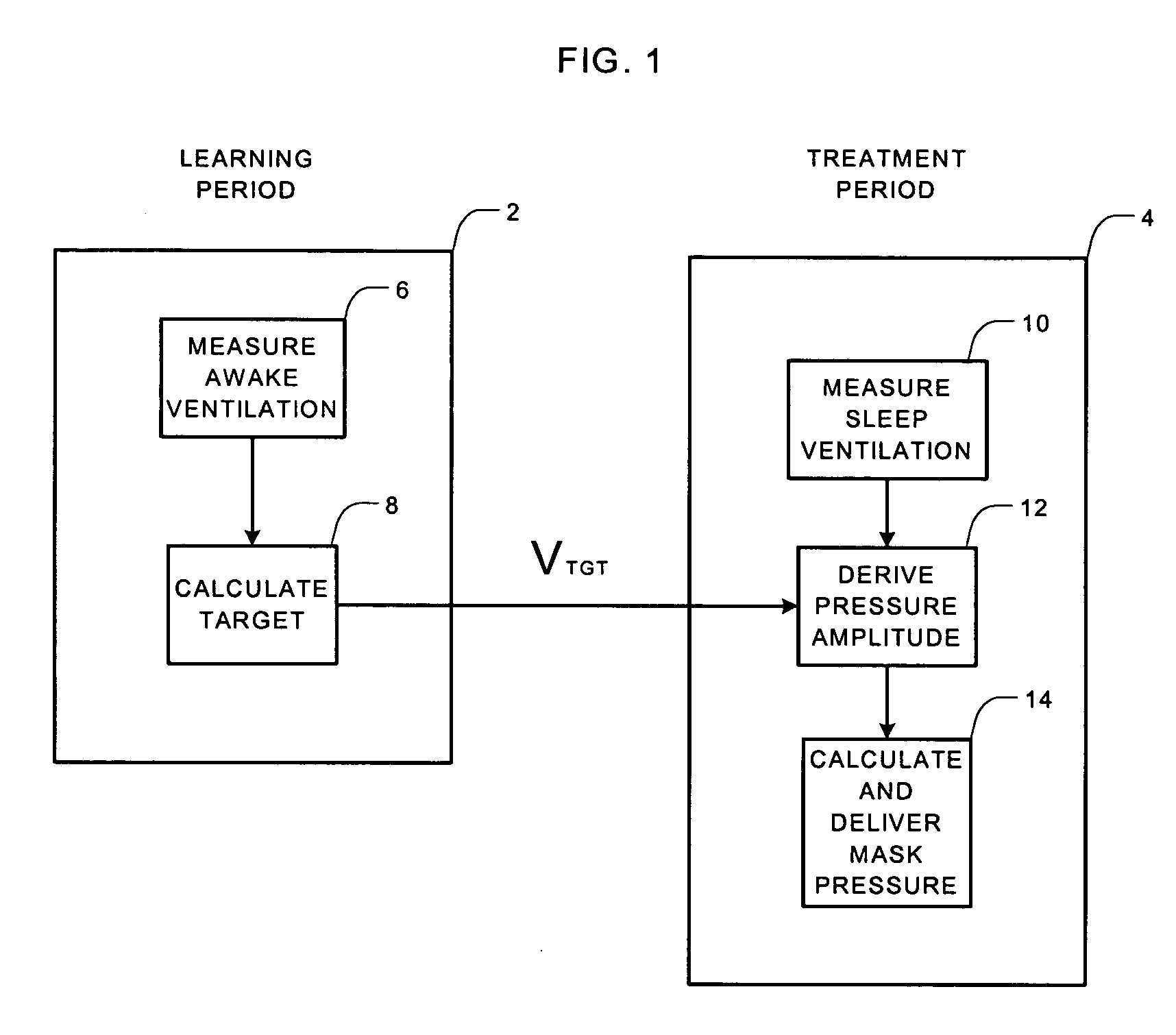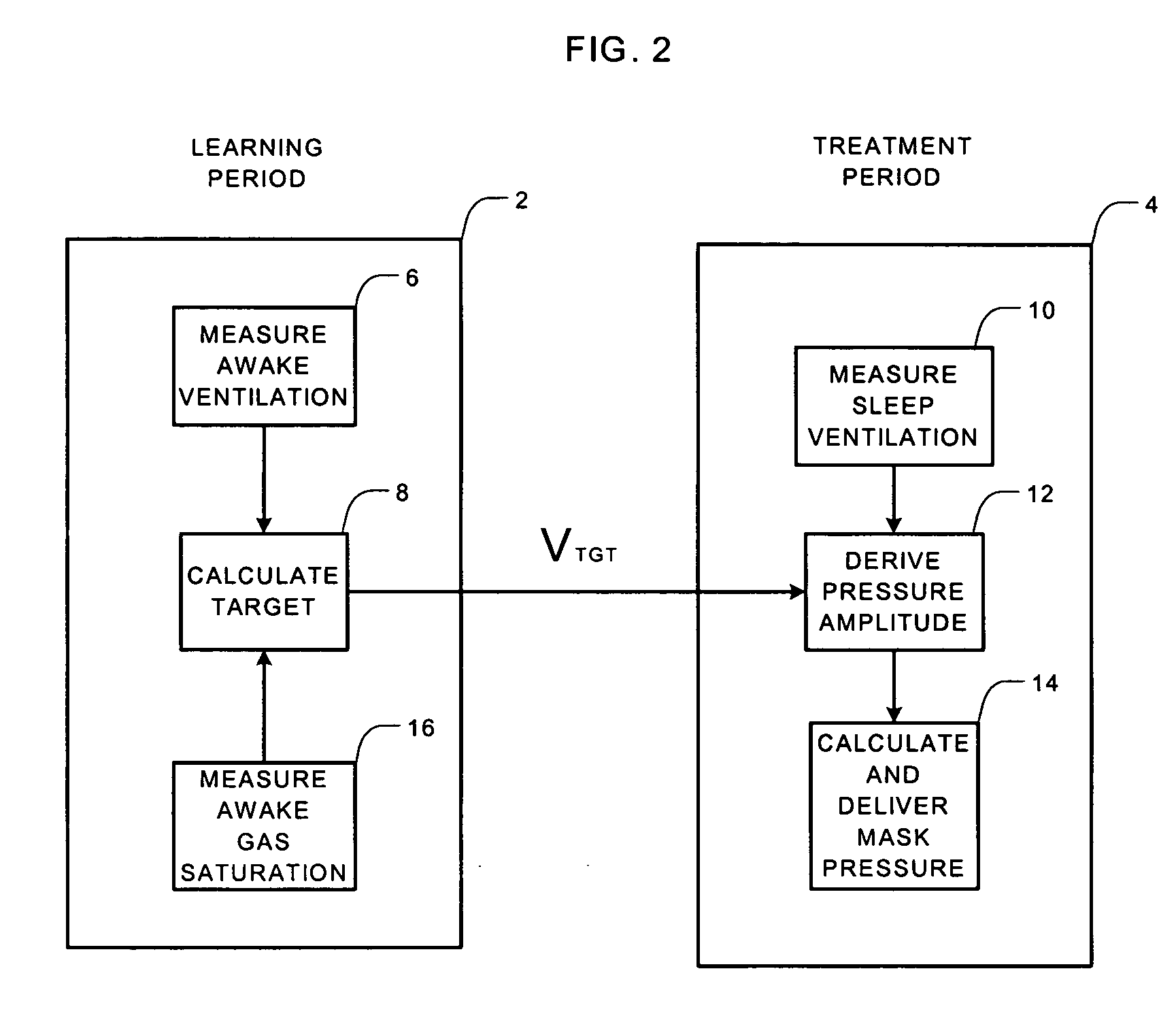Determining suitable ventilator settings for patients with alveolar hypoventilation during sleep
a technology for alveolar hypoventilation and ventilator settings, which is applied in the direction of valve details, valve arrangements, life-saving devices, etc., can solve the problems of over-ventilation with vocal cord closure, sleep disruption, and difficulty in determining the correct degree of ventilatory suppor
- Summary
- Abstract
- Description
- Claims
- Application Information
AI Technical Summary
Problems solved by technology
Method used
Image
Examples
Embodiment Construction
[0024] Referring to FIG. 1, a method embodying the present invention generally involves a learning period 2 and a treatment period 4. During the learning period 2, a ventilator setting, such as a target ventilation VTGT, is determined (step 8). This determination is based upon respiratory characteristics of the patient, for example, a measure of ventilation, taken while a patient is awake (step 6). The target ventilation is then used during the subsequent treatment period 4 while the patient sleeps. In a typical application, the learning period 2 is in the daytime, with the patient awake, and the treatment period 4 is at night, with the patient asleep. However, more generally, the learning period 2 is any period where the patient is quietly awake, and the treatment period 4 (or in general, periods) may also be any time of day or night, with the patient either awake or asleep in any combination.
[0025] For example, consider a learning period 2 in which a patient is quietly relaxed an...
PUM
 Login to View More
Login to View More Abstract
Description
Claims
Application Information
 Login to View More
Login to View More - R&D
- Intellectual Property
- Life Sciences
- Materials
- Tech Scout
- Unparalleled Data Quality
- Higher Quality Content
- 60% Fewer Hallucinations
Browse by: Latest US Patents, China's latest patents, Technical Efficacy Thesaurus, Application Domain, Technology Topic, Popular Technical Reports.
© 2025 PatSnap. All rights reserved.Legal|Privacy policy|Modern Slavery Act Transparency Statement|Sitemap|About US| Contact US: help@patsnap.com



